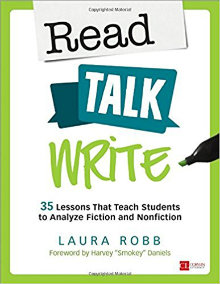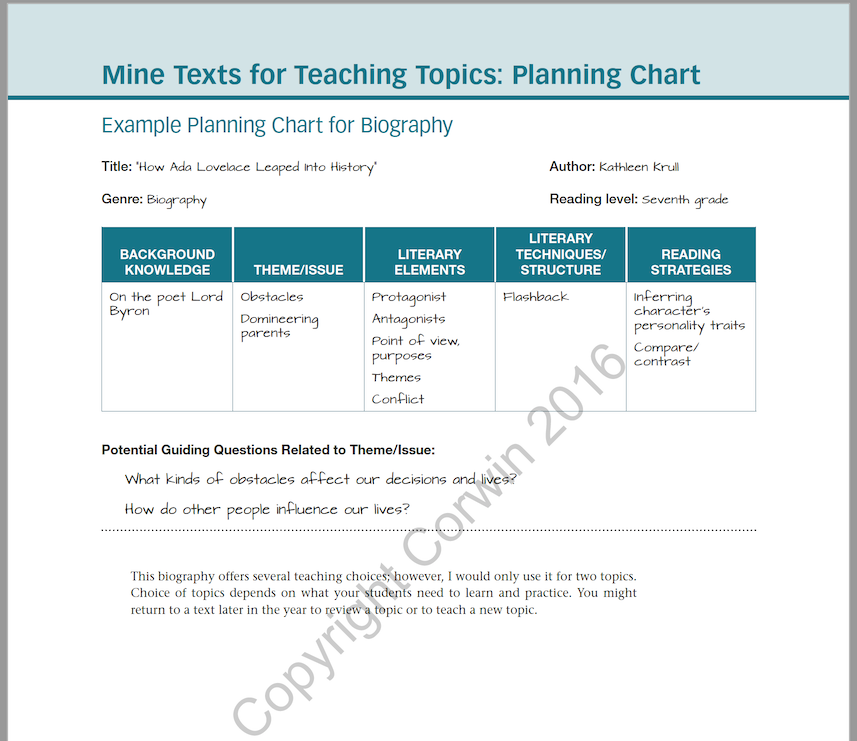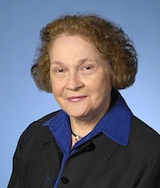Read, Talk, Write: 35 Text Analysis Lessons
Read, Talk, Write: 35 Lessons That Teach Students to Analyze Fiction and Nonfiction
By Laura Robb
(Corwin, 2016 – Learn more)

I love gifts. When I received Laura Robb’s new book, Read, Talk, Write: 35 Lessons That Teach Students to Analyze Fiction and Nonfiction, I was so excited to read what was inside my package that I didn’t open it carefully but just tore into it! I had read Laura Robb’s professional books before and figured I was in for a treat. I was right.

This book is about teaching students to have accountable and enriched conversations which lead to productive and engaging writing. Read, Talk, Write is not just about students talking with each other about their reading or writing, but it also teaches students how to engage in conversations that will stimulate their brains to ask purposeful questions. Laura Robb reminds us of the importance of purposeful talk.
I am going to be transparent with you. After I read the first chapter I decided that I would go to school the next day, teach as usual, and see how much purposeful student-centered talk I encouraged in the classroom. Reflecting after school, I realized it wasn’t enough. I was not providing my students with the benefits that they deserved.
The power of enriched conversations
They needed to learn how to talk, but also how to listen and respond. Laura Robb explains that talk supports recall and comprehension, engages and motivates, becomes a model for “in the head” conversations while engaging with a story, activates ideas for writing about reading, and changes how students think and feel about fiction and nonfiction. I knew after reflecting on my classroom that I wanted to follow up with some of her strategies.
Robb begins her book with the most important piece – the students – and how we need to get to know our students and they need to get to know each other. Admittedly, there are students who aren’t afraid to share, talk, or contribute to any conversation in the classroom, no matter the topic. And certainly there are always conversations in the classroom, but not always productive conversations.
Robb reminds us that we need to know the “whole child,” learning about their likes and dislikes, family life, hobbies, friendships or lack of friendships – what makes them “tick” – to help our instruction. Our students also need to know each other in order to build trust, compassion, and honesty in the classroom.
Supporting the six types of literary conversation
The author is careful about structuring her book so that teachers don’t “dive in the deep end” without any support. She first introduces each of the six types of literary conversations and how each type builds upon the other: turn and talk, whole class discussion, partner talk, small group discussions, “in-the-head” discussions, and teacher-student discussions (conferring).
In addition, throughout the book she generously provides examples of each type, including a detailed description, how to introduce it, prompts and scaffolds to use, assessments, supports for ELL students, and reproducibles. The “lessons in action” (sample lesson) have a brief explanation of the purpose of the lesson, summary of the text, samples of student talk, and reproducibles. If that isn’t enough, all of the reproducibles are available at Corwin’s companion website.
There are about 30 pages of fiction and nonfiction texts to support each reading strategy, such as “Snow Day” by Priscilla Cummings, “Isaac Newton and the Day He Discovered the Rainbow” by Kathleen Krull, and “How Athens Got Its Name,” a retelling by Joanna Davis Swing.
Each selection is carefully chosen to be used as a mentor text for several strategies and they certainly lend themselves to helping students develop close reading skills. I loved using the reproducibles such as bookmarks for “in the head thinking.”
Building skills for life
Robb concludes her book with explaining how these reading and writing strategies benefit the students as you begin to implement the strategies. Students learn to take risks, become more creative, develop empathy, and practice the skill of being able to challenge their own thinking and reformulate opinions.
Just think about these skills. They are workplace readiness skills. Skills that will carry them far in their lives. Skills that will teach them how to initiate change and stimulate higher order thinking. Skills that are critical for any job: teacher, lawyer, salesperson or scientist.
I challenge you to take the “plunge” with this book, but take it with one or more colleagues. Working together as a team builds strength in your own practice. Read, talk, and write with your colleagues to adapt the lessons to meet the needs of your students.
Ask your administrator if you could begin a book club or Professional Learning Community activity to research and reflect on your teaching methodology and how to use this book effectively. I have found in my own teaching practice that when you work together as a team, share your ideas and teaching practices, change comes easier and inspires you .
Having Robb’s book on hand is like having a literacy coach in your classroom all the time. She offers experience-honed advice, examples from personal experience, and teacher-tested classroom lessons with student tested literary conversations. This book was valuable to me and will be to you because she explains each strategy with handouts and student samples and then demonstrates how she or other teachers applied them in their classrooms. Student conversations, whether with their peers or with the teacher, are often included in the model lessons.
I don’t know about you, but my teacher bag is quite heavy. I am happy to make it heavier by transporting this book back and forth each day. I don’t want to be without it at any time! (Except vacations in a sunny place.)
Linda Biondi is a fourth grade teacher at Sharon Elementary School in Robbinsville, NJ and a long-time Morning Meeting practitioner. She’s also the recipient of several educational grants, a Teacher Consultant with the National Writing Project, and a participant on the NJ Department of Education Teacher Advisory Panel and with ECET2 Celebrate Teaching.






































